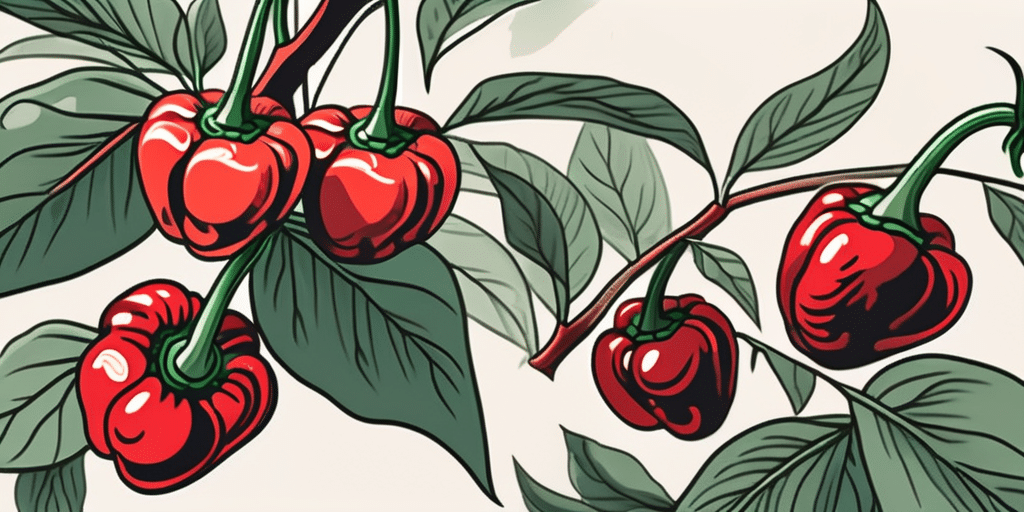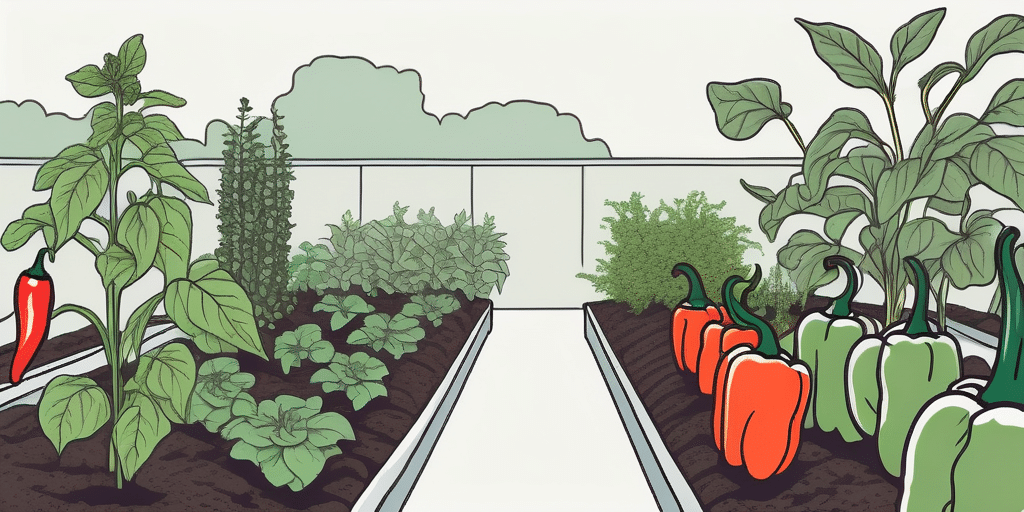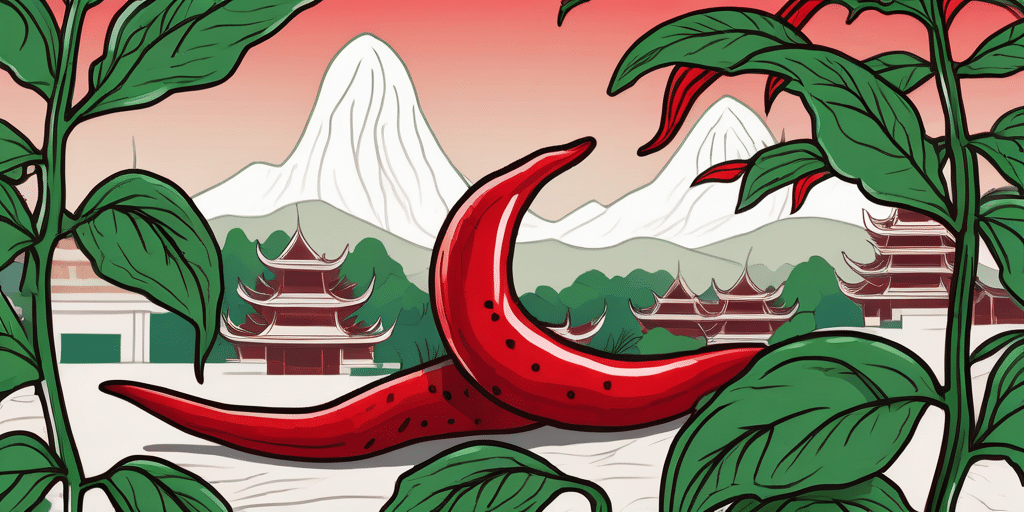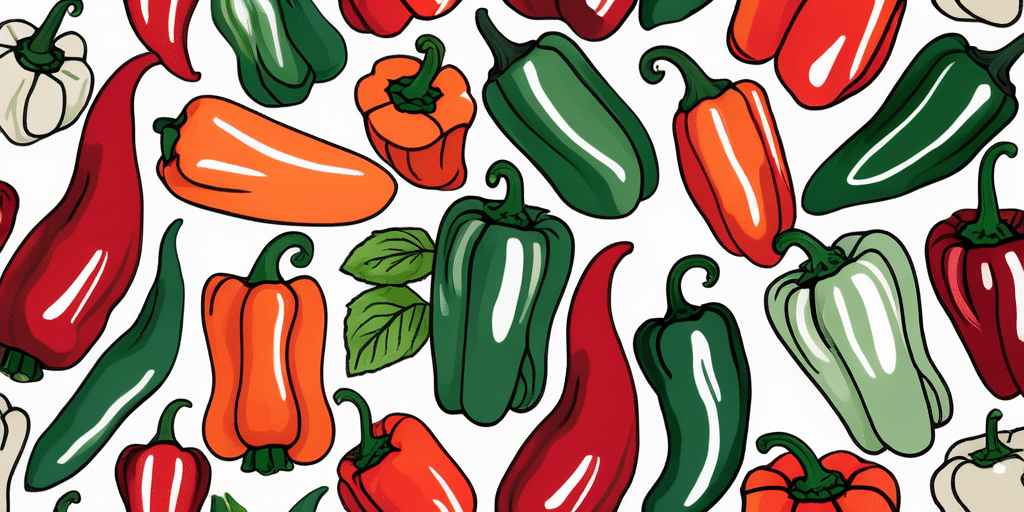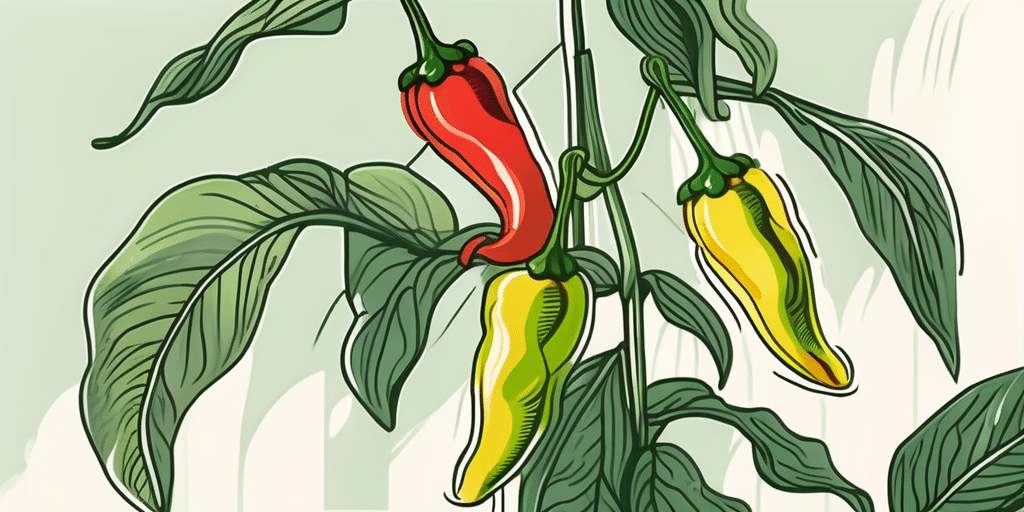Bell peppers are not only colorful and delicious, but they are also packed with essential nutrients. Whether you’re an experienced gardener or a beginner, growing bell peppers can be a rewarding and enjoyable experience. In this comprehensive guide, we will explore everything you need to know about growing bell peppers, from understanding the different varieties to harvesting and storing your peppers.
Understanding Bell Pepper Varieties

There are several different varieties of bell peppers, each with its own unique characteristics. Understanding the differences can help you choose the right variety for your garden.
Characteristics of Bell Pepper Varieties
Bell peppers come in various colors, including green, red, yellow, and orange. The color of a bell pepper indicates its maturity level. Green bell peppers are harvested when unripe, while red, yellow, and orange peppers are fully ripe.
Green bell peppers have a slightly bitter taste and a crisp texture. They are commonly used in savory dishes such as stir-fries, salads, and stuffed peppers. Red bell peppers, on the other hand, have a sweeter flavor and are often enjoyed raw in salads or roasted for a smoky taste. Yellow and orange bell peppers have a milder flavor compared to their red counterparts, making them a versatile choice for both raw and cooked dishes.
Additionally, bell peppers can vary in size and shape. Some varieties produce small, round peppers, while others grow long and narrow. The smaller varieties are perfect for snacking or adding a pop of color to salads, while the larger ones are great for stuffing or grilling.
Choosing the Right Variety for Your Garden
When selecting a bell pepper variety for your garden, consider factors such as your climate, available space, and personal preferences. Certain varieties may thrive better in cooler or hotter climates, so it’s important to choose a variety that suits your local weather conditions.
If you live in a region with a shorter growing season, you might want to choose early-maturing varieties that can produce peppers in a shorter period of time. These varieties are bred to reach maturity faster, allowing you to enjoy fresh bell peppers even in areas with a shorter frost-free period.
On the other hand, if you have a longer growing season, you can experiment with different varieties that require more time to mature. These varieties often have a higher yield and may produce larger peppers.
Additionally, if you have limited space, you may opt for compact or dwarf varieties that are well-suited for container gardening. These varieties are ideal for balconies, patios, or small gardens where space is a premium. They still produce flavorful peppers but in a more compact size.
Consider your personal preferences as well. Some varieties may have a more intense flavor, while others may be milder. Experimenting with different varieties can add excitement to your culinary adventures and allow you to discover your favorite bell pepper flavors.
Essential Requirements for Growing Bell Peppers
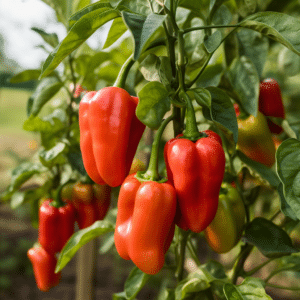
Before planting bell peppers, it’s crucial to ensure you meet their essential requirements, including soil, sunlight, and watering needs.
Soil Requirements
Bell peppers thrive in well-draining soil that is rich in organic matter. Prior to planting, prepare the soil by incorporating compost or well-rotted manure to improve its fertility and drainage.
It’s also important to ensure the soil has a pH level between 6.0 and 6.8, as bell peppers prefer slightly acidic to neutral soil.
Sunlight and Temperature Needs
Bell peppers are sun-loving plants that require at least six to eight hours of direct sunlight daily. Choose a sunny spot in your garden that receives ample sunlight throughout the day.
In terms of temperature, bell peppers thrive in warm climates with daytime temperatures ranging from 70°F to 85°F. They can tolerate slightly cooler temperatures but may suffer frost damage if exposed to temperatures below 55°F.
Watering and Fertilization Guidelines
Proper watering is crucial for the healthy growth of bell peppers. Water your plants consistently, keeping the soil evenly moist but not waterlogged. Avoid overwatering, as it can lead to root rot.
For optimal growth, fertilize your bell pepper plants every three to four weeks during the growing season. Use a balanced fertilizer, rich in nitrogen, phosphorus, and potassium, to provide the necessary nutrients.
Steps to Plant Bell Peppers
Now that you understand the requirements for growing bell peppers, let’s delve into the steps involved in planting them.
Preparing the Soil
Start by preparing the soil before planting your bell peppers. Remove any weeds or debris, and loosen the soil to a depth of 8 to 10 inches using a garden fork or tiller. Incorporate organic matter, such as compost or well-rotted manure, to enrich the soil.
Planting the Seeds
If you’re starting bell peppers from seeds, begin by sowing them indoors 8 to 10 weeks before the last frost date in your area. Fill seed trays or pots with seed-starting mix and plant the seeds at a depth of ¼ to ½ inch.
Keep the soil consistently moist and maintain a temperature of around 70°F for optimal germination. Once the seedlings have developed their second set of true leaves, they are ready to be transplanted outdoors.
Transplanting Seedlings
When the outdoor temperatures have warmed, and all risk of frost has passed, it’s time to transplant your bell pepper seedlings into the garden. Choose a sunny, well-draining spot and space the seedlings 18 to 24 inches apart.
Gently remove the seedlings from their pots, being careful not to damage the roots. Dig a hole slightly larger than the root ball and position the seedling, ensuring it is planted at the same depth as it was in the pot. Backfill the hole with soil and lightly firm it around the seedling.
Caring for Your Bell Pepper Plants

Once your bell pepper plants are in the ground, they will require proper care to ensure healthy growth and bountiful harvests.
Pruning and Supporting Your Plants
As your plants grow, it’s beneficial to provide them with support to prevent the heavy peppers from weighing down or breaking the branches. You can use stakes or cages to support the plants.
Additionally, occasional pruning can help improve airflow and light penetration, reducing the risk of disease. Remove any suckers or lower branches that may be obstructing airflow or shading the peppers.
Pest and Disease Management
Bell peppers can be susceptible to various pests and diseases, including aphids, snails, and fungal infections. Regularly inspect your plants for any signs of pest damage or disease.
Control pests by handpicking or using organic pest control methods. You can also prevent fungal diseases by ensuring good airflow around the plants and avoiding overhead watering.
Harvesting and Storing Bell Peppers
After months of care and nurturing, it’s time to reap the rewards of your hard work by harvesting your bell peppers.
When and How to Harvest
Bell peppers can be harvested at various stages of maturity, depending on your preferences. Green bell peppers are typically harvested when they reach their full size, regardless of color.
If you prefer sweeter and fully ripe peppers, wait until they have turned red, yellow, or orange. Simply cut the peppers from the plant using a sharp knife or pruners, leaving a small stem attached.
Storing and Preserving Your Bell Peppers
If you have an abundance of bell peppers, you may want to store or preserve them for later use.
For short-term storage, place the peppers in a plastic bag and store them in the refrigerator. They should stay fresh for up to a week. Alternatively, you can also freeze bell peppers by slicing or chopping them and placing them in sealed freezer bags.
To enjoy the flavors of your garden throughout the year, consider pickling or canning your bell peppers. This will allow you to savor their taste even during the off-season.
By following the steps outlined in this comprehensive guide, you can successfully grow bell peppers in your own garden. From choosing the right variety to caring for your plants and preserving the harvest, the journey of growing bell peppers is both exciting and rewarding. Get started today and enjoy the bountiful harvests of these vibrant and versatile vegetables!

